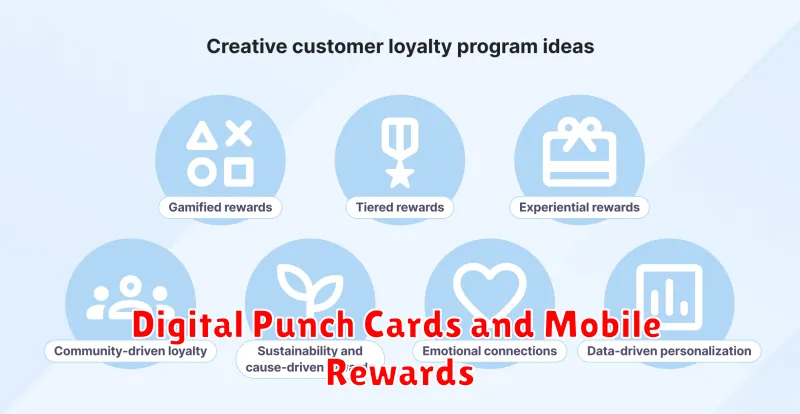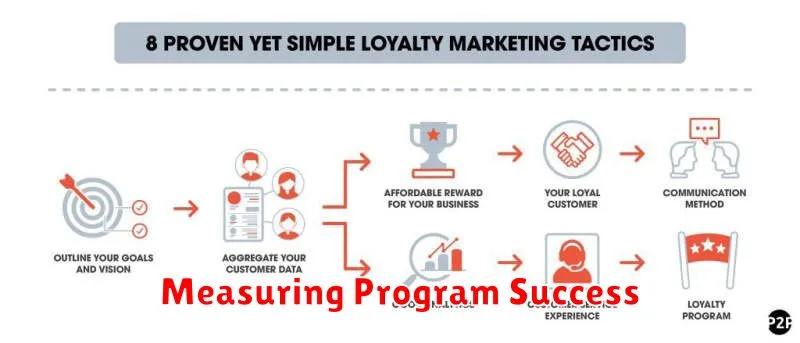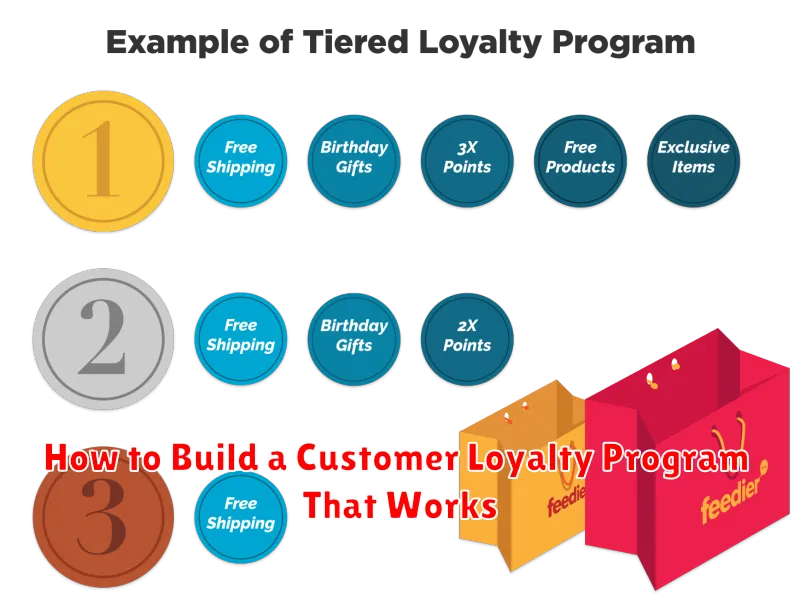In today’s competitive market, cultivating customer loyalty is paramount to sustained business success. A well-structured customer loyalty program can be the key differentiator, driving repeat business, increasing customer lifetime value, and fostering brand advocacy. This article will provide a comprehensive guide on how to build a customer loyalty program that not only attracts customers but also keeps them engaged and coming back for more. We’ll explore the essential elements of a successful program, from understanding your target audience to choosing the right rewards and leveraging the power of data analysis. By implementing these strategies, you can transform casual customers into loyal brand ambassadors.
Developing a customer loyalty program that works requires careful planning and execution. It’s not enough to simply offer discounts; you must create a program that resonates with your target audience and provides genuine value. This article will delve into the specifics of designing a compelling program, including selecting the right loyalty program model, structuring rewards that truly incentivize repeat purchases, and utilizing effective communication strategies to keep your customers informed and engaged. We’ll also cover the importance of measuring the effectiveness of your customer loyalty program and making adjustments as needed to ensure it continues to deliver optimal results.
Why Loyalty Programs Matter
In today’s competitive market, cultivating customer loyalty is more critical than ever. Loyalty programs offer a powerful mechanism for achieving this.
They provide tangible rewards that encourage repeat business, effectively transforming casual customers into dedicated patrons. This translates into increased customer lifetime value, a key metric for sustainable business growth.
Furthermore, robust loyalty programs foster a sense of community and exclusivity, strengthening the bond between customers and your brand. This can lead to increased brand advocacy and positive word-of-mouth referrals.
Types of Customer Loyalty Models
Several models can be implemented to foster customer loyalty. Understanding the nuances of each allows businesses to choose the most effective strategy.
Points-based systems are a popular choice, rewarding customers with points for purchases which can later be redeemed for rewards. Tiered programs offer increasing benefits as customers spend more, creating a sense of exclusivity and encouraging higher engagement.
Value-based programs focus on providing exclusive perks and experiences, such as early access to sales or personalized recommendations. Subscription or membership models provide recurring value and predictable revenue streams while fostering a sense of community.
Finally, partnership programs involve collaborations with other businesses to offer bundled services or exclusive discounts, expanding the reach and appeal of the loyalty program.
Points-Based vs Tiered Systems
When designing a customer loyalty program, choosing between a points-based and a tiered system is a crucial decision. Points-based systems reward customers with points for every purchase, which can be redeemed for rewards. This system is simple to understand and offers immediate gratification.
Tiered systems, on the other hand, categorize customers into different levels based on their spending or engagement. Higher tiers unlock increasingly valuable benefits. This approach encourages repeat business and fosters a sense of exclusivity.
Choosing the right system depends on your business goals and customer base. Consider which approach will best motivate your target audience and align with your overall marketing strategy.
Digital Punch Cards and Mobile Rewards

In today’s digital age, traditional punch cards have evolved into mobile-based reward systems. These programs offer a convenient way for customers to earn and track rewards directly on their smartphones.
Customers typically scan a QR code at checkout or make purchases through a branded app to accumulate points or “punches.” These accumulated rewards can then be redeemed for discounts, free items, or exclusive offers.
Digital punch cards eliminate the need for physical cards, reducing clutter and the risk of loss. The mobile format also allows for personalized offers and targeted promotions based on customer purchase history and preferences.
Personalization for Retention
Personalization is key to a successful loyalty program. Customers are more likely to engage with a program that recognizes their individual preferences and purchase history.
Tailor rewards and offers to each customer’s unique needs. Instead of blanket discounts, consider offering personalized recommendations, early access to sales, or exclusive content based on past purchases and browsing behavior. This demonstrates that you value them as an individual, fostering a deeper connection with your brand.
Use data to segment your customers into different groups based on their demographics, purchase frequency, or spending habits. This allows you to create targeted campaigns that resonate with specific customer segments, maximizing the impact of your loyalty program.
Email and SMS Loyalty Integration
Integrating your loyalty program with email and SMS marketing is crucial for engagement and retention. These channels provide direct communication lines to deliver personalized messages.
Use email to send welcome messages to new loyalty members, exclusive offers, and points balance updates. Personalized recommendations based on past purchase history further enhance engagement.
SMS messaging is ideal for sending time-sensitive promotions, reward reminders, and birthday greetings. The immediacy of SMS increases the likelihood of customer action.
Referral Incentives
Referral incentives encourage existing customers to bring in new business by rewarding them for successful referrals. This leverages the power of word-of-mouth marketing and can be highly effective.
Consider offering rewards for both the referrer and the referred friend. This double incentive can be more motivating. Examples include discounts, free products, or points added to loyalty accounts.
Structure the incentive program clearly. Define what qualifies as a successful referral, such as a completed purchase or a new account signup. Ensure the process for redeeming rewards is straightforward.
Tracking Customer Lifetime Value
Customer Lifetime Value (CLTV) is a crucial metric for assessing the long-term profitability of your loyalty program. It represents the total revenue you can expect from a single customer throughout their relationship with your business.
Tracking CLTV helps you understand the effectiveness of your loyalty program in retaining customers and increasing their spending. By analyzing CLTV, you can identify high-value customers and tailor your program to better cater to their needs, maximizing their lifetime value.
Calculate CLTV by multiplying average purchase value by average purchase frequency and then multiplying that by the average customer lifespan. Regularly monitor and analyze this metric to refine your loyalty program and ensure its contributing to long-term business growth.
Avoiding Common Pitfalls
Creating a successful customer loyalty program requires careful planning and execution. Avoiding common pitfalls is crucial to maximizing effectiveness and achieving desired results.
One common mistake is making the program too complex. Simplicity is key for both customer understanding and ease of management. Overcomplicated programs can deter participation and create administrative headaches.
Another pitfall is failing to provide adequate value. Rewards must be enticing enough to motivate continued engagement. Insufficient rewards can lead to program abandonment.
Finally, neglecting to promote the program effectively can hinder success. Customers must be aware of the program’s existence and its benefits to participate.
Measuring Program Success

Key performance indicators (KPIs) are crucial for evaluating the effectiveness of your customer loyalty program. Tracking these metrics will provide insights into program performance and areas for improvement.
Some important KPIs to consider include:
- Customer Retention Rate: This measures the percentage of customers who remain loyal to your brand over a specific period. A higher retention rate indicates a successful loyalty program.
- Customer Lifetime Value (CLTV): This metric estimates the total revenue a customer will generate throughout their relationship with your business. An increasing CLTV suggests the program is driving greater customer value.
- Program Participation Rate: This measures the percentage of eligible customers actively enrolled in the loyalty program. Low participation may signal a need to re-evaluate the program’s appeal or accessibility.
- Redemption Rate: This tracks the percentage of issued rewards or points that are actually redeemed by customers. A low redemption rate could point to unattractive rewards or a complex redemption process.
By regularly monitoring these KPIs, you can gain a comprehensive understanding of your program’s strengths and weaknesses, enabling data-driven adjustments and optimization strategies.

